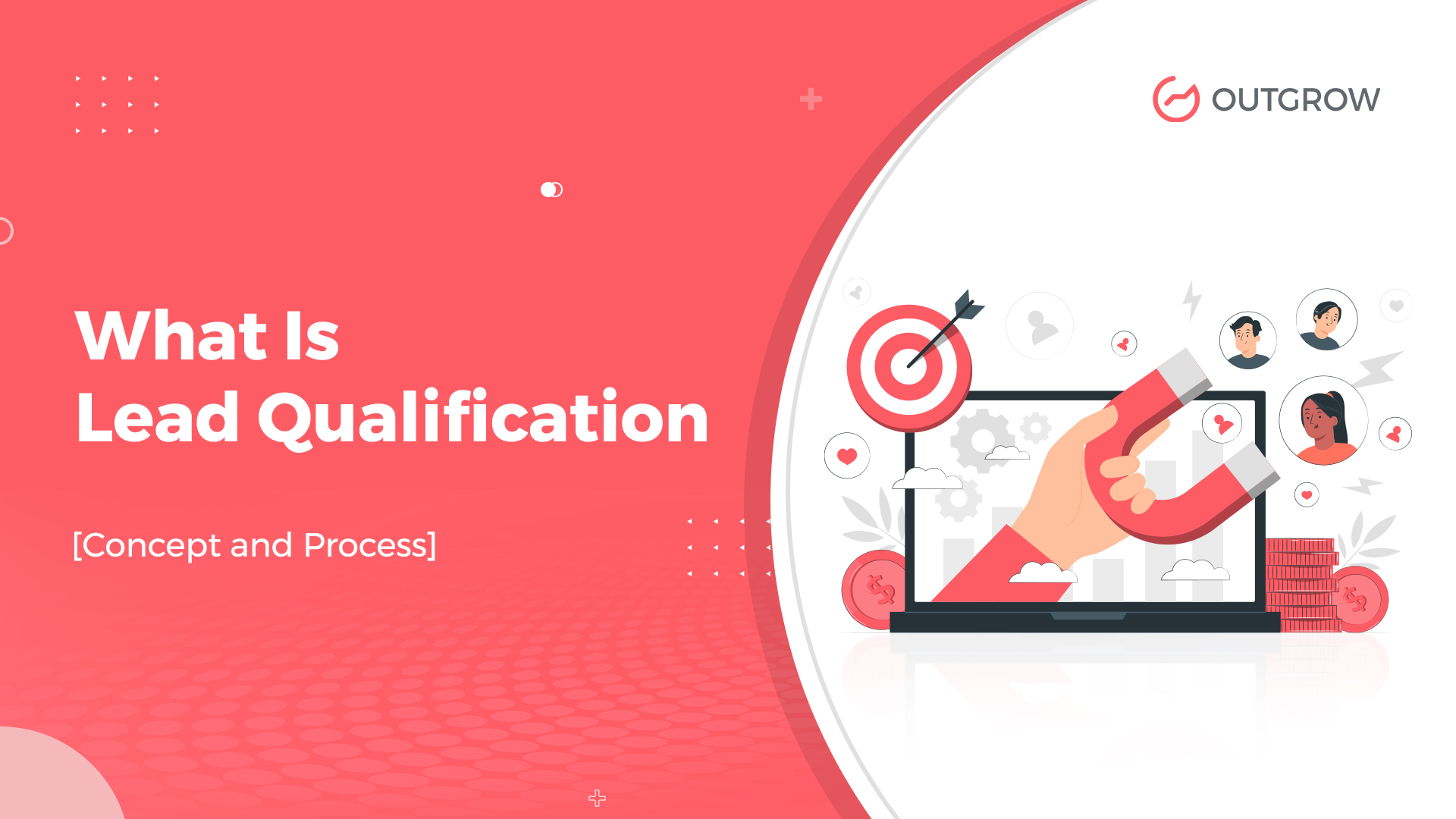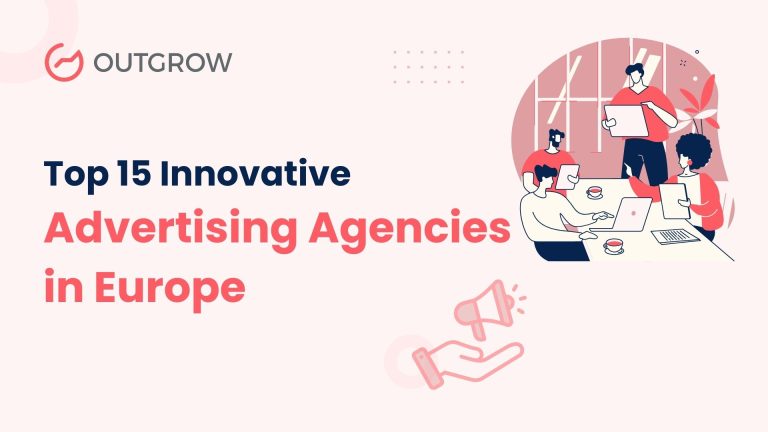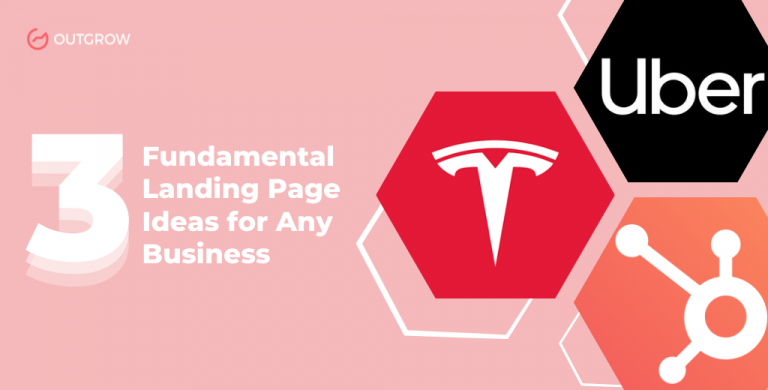What Is Lead Qualification [Types + Process + Tools]
Table of Contents
So, let’s dive right into it!
What Is Lead Qualification?
The process of filtering and segregating your leads is called lead qualification. It helps differentiate between potential and non-potential leads. This means determining the likability of your prospect to convert into a customer.
Once you filter out qualified leads, you can segment and re-target them to run separate campaigns and improve your marketing efforts. Hence, lead qualification is crucial to ensure that your marketing and sales efforts are being realized to their full potential.
Moreover, whether it is content, social media, or email marketing, all contribute to lead generation. Hence, it is imperative to make the best out of these marketing strategies.
PRO TIP- Enhance your content marketing game with Outgrow’s academy, and master the art of building interactive content.
Lead Qualification Tools
One needs to generate leads as accurately as possible to qualify them. Numerous tools can act as amazing lead magnets. Moreover, a strategically created and smartly placed lead magnet helps in qualifying the leads.
Some of these lead magnet tools are-
1. Quizzes
Quizzes are a great example of interactive content. The right kind of quizzes will help you understand your audience better. It will make it easier for you to filter out prospects from non-potential leads. Thus, you can easily find out the leads that can be qualified.
2. Polls
Polls are another way to generate and qualify leads. You can put up various polls that will help you segregate your audience. For example- you are a platform that sells grocery products online. Create a poll asking who prefers online grocery shopping over offline. The results will divide your shoppers into- online and offline. Now you will know who to focus on, i.e., leads interested in online shopping only. And this is how it’s done!
3. Forms
Forms and surveys are the most authentic way of lead generation. They help generate and qualify the most accurate leads. More often than not, forms are filled by interested people only. So, they make the process of qualifying easier as disinterested leads are mostly filtered out already.
4. Chatbots
Chatbots act as yet another effective lead magnet tool. A chatbot is a software program that helps customers by automating conversations. They are available 24/7 to solve every query that a visitor might have. The visitors who interact with a chatbot, looking to solve a problem, are highly potential leads.
5. Calculators
Interactive calculators are a useful tool for lead qualification. They require visitors to insert data to get a logically computed result in real-time. If a visitor uses a calculator to find out a specific result, he is more likely to make a purchase.
6. Product Recommendation Quizzes
Product recommendation quizzes help generate qualified leads from e-commerce websites. Visitors who attempt a recommendation quiz are generally looking for suggestions for products that match their needs and preferences. This means that they are interested and therefore, have more potential of getting converted into paying customers.
Lead generation and qualification become easier when the tools you use automatically filter out leads for you. Outgrow is one such platform that lets you create immersive tools like the ones above. It lets you qualify and segment leads based on the users’ responses.
Moving further, let’s look into the importance of lead qualification.
Why Is It Important for You to Qualify Your Leads?
Before you start pitching your product to your prospects, you need to find out who are the ones genuinely interested in your product. That’s where lead qualification steps in-
Qualifying leads helps in-
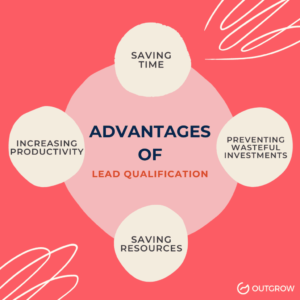
Saving Time and Resources
By qualifying your leads you won’t be wasting time, money, and effort on prospects who are not likely to turn into customers. It will give you the time to focus your ideas and energies on the ones who have the potential to make a purchase. You need not pursue leads who don’t match your “ideal customer” profile.
Moreover, resources, more often than not, are limited for every business. So, it becomes imperative to reserve the available resources for the right people. Therefore, lead qualification ensures that minimum resources produce maximum results.
Increasing Productivity
It is known that productivity increases when you start seeing better results. Your team will see better conversion rates when they concentrate on the leads that have potential. Besides, productivity automatically increases when you are not wasting time.
The key here is to not pay equal attention to all the leads. You have to filter out leads with better value and scope. Categorizing and then prioritizing those leads will help in increasing productivity.
Preventing Wasteful Investments
When resources are manipulated for non-potential leads, it results in bad investments, leading to losses. Lead qualification helps to prevent such wasteful investments. Therefore, when a proper lead qualification process is put in place, you can easily filter out leads that have the real potential of becoming a customer.
Furthermore, all of this directs you toward making the right investments in the right place and focusing on the right people.
Now that we’ve discussed how lead qualification can benefit you, let’s talk about the types of leads you can qualify for.
Types of Qualified Leads
We understood what a qualified lead is. But to take these leads to conversion, we also need to understand at which stage they are in the sales funnel. Hence, we break them down into these three different types:
1. Information Qualified Leads (IQL)
These leads are called “cold leads”. They provide their contact details in return for helpful information about a topic relevant to the lead’s query. These contact details can include name, email address, phone number, etc.
2. Marketing Qualified Leads (MQL)
These leads are called “warm leads”. They show continuous interest in your company. When you successfully solve a problem of an IQL, then you move ahead and get MQLs.
3. Sales Qualified Leads (SQL)
These are called “hot leads”. They are the ones who are willing to make a purchase. SQLs have a high closing rate. The faster you follow up with them, the faster they will convert.
All the above-mentioned leads go through the funnel to get identified as ‘sales-ready’ leads.
However, the question remains -how do you know which leads have the potential to be qualified? Let’s find out.
Criteria for Qualifying Your Leads
A prospect needs to meet pre-defined criteria to be qualified as a potential lead. A well-structured lead qualification criteria will help you range your leads from cold to hot. You will be able to distinguish between the ones having the least and most potential.
The 5 key criteria for lead qualification are as follows-
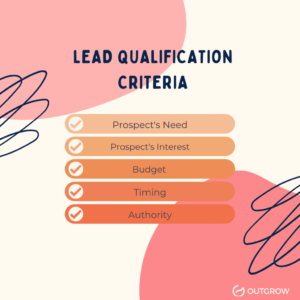
1. Prospect’s Needs
The need of buying a certain product is the foremost criterion for lead qualification. If a lead doesn’t need to buy your product, then he is less likely to make a purchase. Depending on the nature of your product or service, you may have very specified needs or slightly vague needs.
By using interactive forms of content, you will easily be able to determine the needs of your leads and qualify them accordingly.
So, to find out the needs of your leads, use Outgrow’s templates to create polls, forms, and quizzes.They will help you engage with your prospects and understand their needs. You can then qualify them depending on whether their needs match your product profile or not.
For example, a real estate company can use a quiz like “Should You Buy or Rent?” to qualify a lead as per their offering.

2. Prospect’s Interests
The interest of a buyer is another important criterion for determining purchase potential. Your likability to buy is directly proportional to your interest in the product. If a lead doesn’t have an interest in buying, he might not even hear the full pitch of a sales executive.
Different customers have different interest levels when it comes to buying something. Some customers are slightly more or less interested than others, while some are just great enthusiasts to try new things. But this does not guarantee a purchase. It may not even be made at all.
So, it’s better to invest your time and efforts in those leads who are interested in buying. If a lead has an interest, they can be qualified as a potential buyer. You can find out about the interests of your leads through interactive content. Along with collecting important information, you can boost your engagement with your leads by using interactive tools such as chatbots, surveys, quizzes, etc.
3. Prospect’s Budget
Your lead may have the need and interest to buy your product. But, do they have the budget to purchase it? Understanding your lead’s budget is the best criterion for products with flexible pricing.
A lead will qualify when their budget fits in your pricing range. A lead with an adequate budget is a potential lead. To know crucial details like these, you can leverage interactive calculators to determine your lead’s budget.
For example, having a calculator like “Calculate the ROI of using Outgrow” on Outgrow’s website would help users understand if this is the right product for them. Moreover, it helps the company understand which leads have the apt budget for their product. It’s a win-win situation.
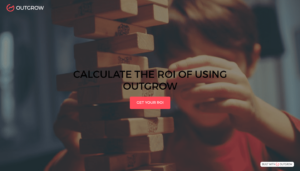
4. Timing
If the timing is not right, then nothing happens according to plan. Purchase timeframe is an important criterion for lead qualification. This criterion mostly comes in handy when buying an expensive product.
For example- if a person is looking to buy a car, he will probably form a timeline to see where he can fit an expensive buy. There is no point in pitching to leads who don’t have the timing right to buy your product.
By using this “How much do you save by buying a Tesla” calculator, a person can calculate his savings when buying a car and accordingly decide if the timing is right for him to accommodate this purchase.

5. Authority
Having authority means whether or not your lead has the power to make a purchase decision. The decision maker’s role is very important for qualifying a lead. This option is especially crucial for corporate lead generation.
In such cases, your lead is a potential lead when they have the authority in the decision-making process.
For example- if you are selling your product to a big firm, and your lead is an employee at a fresher level. It won’t make sense to qualify this lead since he might not be in a position to make a purchase. The authority of such decisions lies with a manager-level person.
However, this lead may be helpful to give you the contact details of a person who is in charge of making purchase decisions for the firm.
Now that we have covered all the fundamentals, let us understand the process of lead qualification.
How to Qualify a Lead?
The process of qualifying leads includes five steps.
Step 1: Understanding Your Buyer’s Profile
Understanding your buyer profile is the first step of the lead qualification process. You need to prepare an “ideal customer” for your product or service.
This can be done by asking various questions such as:
- Who would want to buy your product?
- Why would they want to buy it?
- What interest do they have?
- What is their budget?
- What problems are they facing?
- What solution are they looking for?
Based on such details, you can qualify the leads who match your ideal profile.
Step 2: Differentiate Between Intent and Interest
Interested leads are those who like your product. They are intrigued by your services and they like what you offer. On the other hand, leads with an intent to buy are different. They specifically look for your prices and search your websites to better understand your product.
Once you segregate leads with ‘intent’ from leads with ‘interest’, qualification becomes easier. Use CRM tools to keep track of your leads’ activities and then qualify them accordingly.
Step 3: Sell to the Right Person
Ensuring that you are investing your time and effort in the right person is critical in the process of lead qualification. This helps make sure that your sales efforts are not wasted.
Qualify the leads who you think match your buyer’s profile and then focus your efforts only on them. You can also ask questions from the leads to make sure that they are fit for being qualified. In-person conversations before a sales pitch can make a huge difference here.
Step 4: Check Your Prospect’s Website
Reviewing your prospect’s company website is going to be helpful. Analyze the information given on their website and try to understand the software they use.
Before qualifying them, ask yourself if they are the right fit. Will they purchase the solution you are offering? Do they have the budget for it? Does their company require it?
Step 5: Use CRM Tools
Combine your CRM tools with marketing automation to make your lead qualification process smoother and quicker. CRM tools will help you handle high volumes of leads efficiently.
With a CRM system in place, you can access all important information about the leads in one place. With this information, you can prioritize and qualify high-value leads.
However, if you use an all-inclusive interactive content tool for qualifying your leads, it would come with its data collection and analysis features. Moreover, such a tool would also have features for lead nurturing like email automation. So it’s a good idea to invest in a good tool that helps you create tools for lead qualification and at the same help manage those leads.
Conclusion
We’ve now established that lead qualification makes your process of converting leads more efficient. On top of that, the process of lead qualification helps save a lot of time and effort. It enables you to know and understand your leads and accordingly move further towards converting them.
But how can you find relevant information for qualifying your leads? We’ve already revealed the secret in the blog – Interactive Content!
So, what’re you waiting for? Sign up for Outgrow’s 7-day free trial and start creating engaging interactive content and make your lead qualification process simple and seamless!
FAQs

Divya Garg is a Marketing Generalist at Outgrow. You will find her scrolling through Instagram and Pinterest in search of ideas. Art is her safe space; be it writing, music, or drawing.

